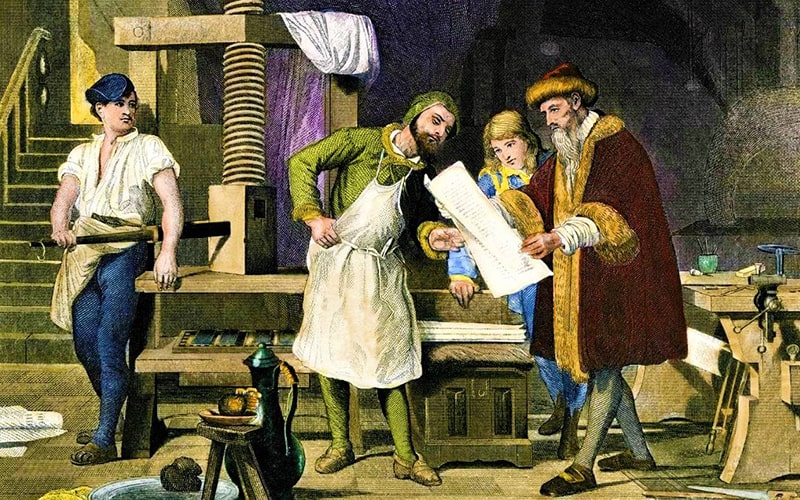The pioneer who brought the printing press to Europe: Who is Johannes Gutenberg?
He invented a metal alloy suitable for printing, a mold for casting letters, special oil-based printing ink, and a machine to achieve all this. Though movable type was already in use in East Asia, Gutenberg invented the printing press, which later spread worldwide.

His real name is Johannes Gensfleisch zur Laden. Johannes Gutenberg was born in 1398 in Mainz, Germany, as the child of a wealthy family. He moved to France when he was young. Gutenberg, who worked as a jeweler here, worked on metals and precious stones.
Starting from 1437, he became interested in printing. Gutenberg brought the letterpress printing method to Europe in 1438 and enabled the establishment of the modern printing press in Europe. Gutenberg, who applied this method, which had been used in China and Korea for centuries, to Europe, is considered one of the pioneers of the history of communication.
Johannes Gensfleisch zur Laden zum Gutenberg (c. 1393–1406 – 3 February 1468) was a German inventor and craftsman who introduced letterpress printing to Europe with his movable-type printing press. Though movable type was already in use in East Asia, Gutenberg invented the printing press, which later spread across the world. His work led to an information revolution and the unprecedented mass-spread of literature throughout Europe. It had a profound impact on the development of the Renaissance, Reformation, and humanist movements.
During Gutenberg's time, wooden boards with patterns or letters carved on them, called xylography, were used. Johannes Gutenberg developed the xylography technique in 1450 and discovered typography, which is known as the technique of making multiple prints by combining certain letters. He established his first partnership in the same year. By 1455, his work bore fruit. He first printed a sacred Latin book.
Establishing his first partnership with Johann Fust in 1450, Gutenberg published a book in Latin in 1455 as a result of his work. Gutenberg, who later lost his partnership with Fust due to debts, established a new printing machine in 1465 with the help he received from Mainz Archbishop Adolf von Nassau II. Over time, the printing press became increasingly widespread throughout Europe.
Johannes Gutenberg died in Mainz, Germany, on February 3, 1468, at the age of 70. In 1901, a museum commemorating Gutenberg was established in Mainz. The printing method invented by Gutenberg is considered one of the important events that accelerated the spread of free thought, enabled the development of scientific research, and accelerated the implementation of reforms.
History of printing
Printing techniques, which were first used in the Far East in history, later became widespread throughout the world. The first printing press was invented in China in 593 AD.
It is rumored that the first printed work was when Empress Shotoko printed the texts of Buddhism in Sanskrit using the Chinese alphabet. It is stated in history notes that a Chinese named Pi Sheng tried to print by using porcelain letters and pouring them one by one. The printing press later passed to the Uyghurs. Looking at the 5th century, it can be seen that the printing method was first used on fabrics. In Egypt, with a technique similar to the printing press, the fabric was printed with carved wooden molds. Over time, Arabic texts were also printed on paper using the same system.
Printing press in Europe
He brought European printing techniques to the highest level in the Netherlands. The 14th and 15th centuries were one of the periods in which the printing press advanced. In the 15th century, the Netherlands used "calligrapher" and "engraver" techniques as printing techniques. Calligraphers would write, and engravers would put these writings on the boards. In 1450, John Gutenberg invented a printing machine that could print text with moving parts. With the loan he received from an entrepreneur named Johann Fust, Gutenberg established a printing house and started the printing revolution. The Bible was first printed.
